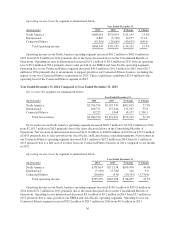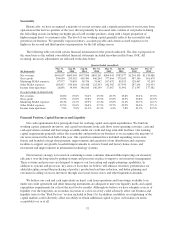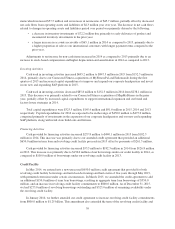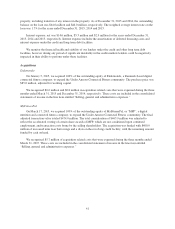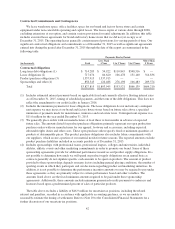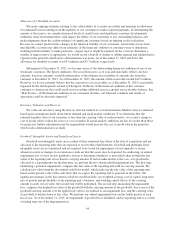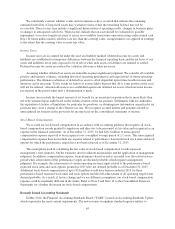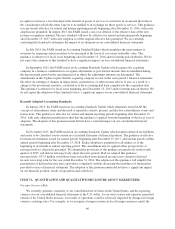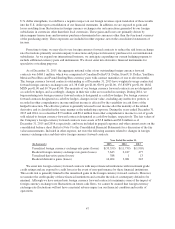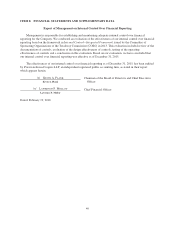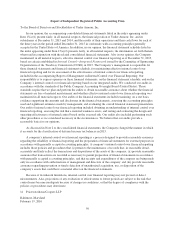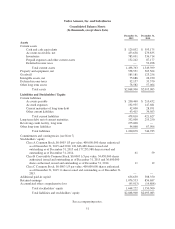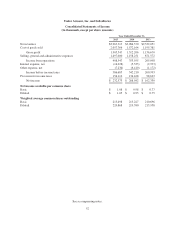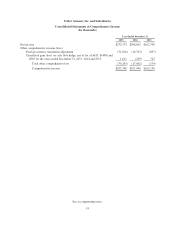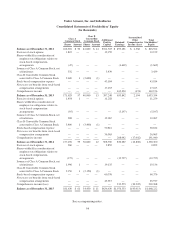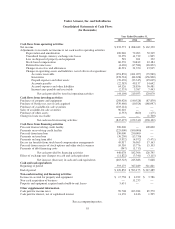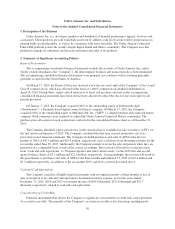Under Armour 2015 Annual Report Download - page 54
Download and view the complete annual report
Please find page 54 of the 2015 Under Armour annual report below. You can navigate through the pages in the report by either clicking on the pages listed below, or by using the keyword search tool below to find specific information within the annual report.recognize revenue in a way that depicts the transfer of goods or services to customers in an amount that reflects
the consideration which the entity expects to be entitled to in exchange for those goods or services. This guidance
was previously effective for annual and interim reporting periods beginning after December 15, 2016, with early
adoption not permitted. In August 2015, the FASB issued a one-year deferral of the effective date of the new
revenue recognition standard. The new standard will now be effective for annual and interim periods beginning
after December 15, 2017 with early adoption as of the original effective date permitted. We are currently
evaluating this standard to determine the impact of its adoption on our consolidated financial statements.
In July 2015, the FASB issued an Accounting Standard Update which simplifies the measurement of
inventory by requiring certain inventory to be measured at the lower of cost or net realizable value. This
guidance is effective for fiscal years beginning after December 15, 2016 and for interim periods therein. We do
not expect the adoption of this standard to have a significant impact on our consolidated financial statements.
In September 2015, the FASB issued an Accounting Standards Update which requires the acquiring
company in a business combination to recognize adjustments to provisional amounts that are identified during
the measurement period in the reporting period in which the adjustment amounts are determined. The
amendments in this Update require that the acquiring company record, in the same period’s financial statements,
the effect on earnings of changes in depreciation, amortization, or other income effects, if any, as a result of a
change to the provisional amounts, calculated as if the accounting had been completed at the acquisition date.
This guidance is effective for fiscal years beginning after December 15, 2015 and for interim periods therein. We
do not expect the adoption of this standard to have a significant impact on our consolidated financial statements.
Recently Adopted Accounting Standards
In January 2015, the FASB issued an Accounting Standards Update which eliminates from GAAP the
concept of extraordinary items and the need to separately classify, present, and disclose extraordinary events and
transactions. This guidance is effective for annual and interim reporting periods beginning after December 15,
2015, with early adoption permitted provided that the guidance is applied from the beginning of the fiscal year of
adoption. The adoption of this pronouncement did not have a material impact on our consolidated financial
statements.
In November 2015, the FASB issued an Accounting Standards Update which requires deferred tax liabilities
and assets to be classified as non-current in a classified statement of financial position. The guidance is effective
for financial statements issued for annual periods beginning after December 15, 2017, and interim periods within
annual periods beginning after December 15, 2018. Earlier adoption is permitted for all entities as of the
beginning of an interim or annual reporting period. This amendment may be applied either prospectively or
retrospectively to all periods presented. We adopted the provisions of this guidance prospectively in the fourth
quarter of 2015, and did not retrospectively adjust the prior periods. Had we adopted this guidance
retrospectively, $33.5 million would have been reclassified from deferred income taxes-current to deferred
income taxes-long term for the year ended December 31, 2014. The adoption of this guidance will simplify the
presentation of deferred income taxes and reduce complexity without decreasing the usefulness of information
provided to users of financial statements. The adoption of this pronouncement did not have a significant impact
on our financial position, results of operations and cash flows.
ITEM 7A. QUANTITATIVE AND QUALITATIVE DISCLOSURE ABOUT MARKET RISK
Foreign Currency Risk
We currently generate a majority of our consolidated net revenues in the United States, and the reporting
currency for our consolidated financial statements is the U.S. dollar. As our net revenues and expenses generated
outside of the United States increase, our results of operations could be adversely impacted by changes in foreign
currency exchange rates. For example, as we recognize foreign revenues in local foreign currencies and if the
46


